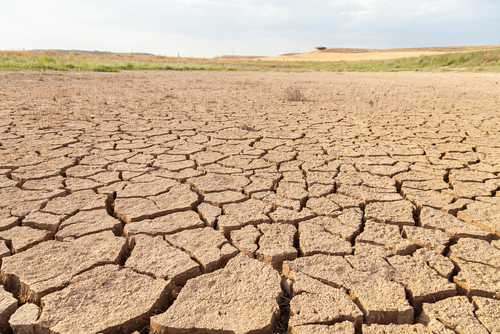
Lakes and Rivers of Europe at Historical Lows and the Italian Situation is among the most worrying
The ANBI Observatory on Water Resources notes a dramatic situation with regard to drought in Europe and reports 27% of the entire continental territory in the red zone and deserving of all possible attention from the national bodies in charge. The rest of the territory under observation in Europe, however, is not in better conditions even if not yet considered in the area of maximum attention.
The climate crisis, the main cause of the drought, has now hit the whole continent and must be addressed in a community as well as a national framework but, so far, the commitment by Brussels cannot be considered sufficient and this lack appears to be sensational in sight of a worsening that will affect the economy itself of all the European nations and any other nation that benefits from supplies strictly linked to the water structure.
In the so-called “arid area”, in addition to the North West of Italy, severely affected for years by lack of water and loss of water volume in natural basins, there are also the Iberian Peninsula and countries such as France, Germany, the Netherlands, the Southern England, Romania, Hungary, Bulgaria and Moldova where, the absence of significant autumn rains, has brought the water level of the largest lakes to an all-time low. There is an obvious urgency to exponentially increase the water reserves of countries in distress with a greater development of rainwater storage facilities which, however, always seem to be too low compared to the annual requirement.
According to the latest report of the Joint Research Center (JRC) of the European Commission dating back to August 2022, entitled “The Drought in Europe-August 2022”, 47% of the European Union is in conditions of extreme alert for drought, caused also from the record heat recorded in the last summer and which has severely tested the waterways of the whole continent with the consequent decrease in water basins.
During the summer of 2022, the Iberian Peninsula was hit by severe drought due to a lack of rain never so evident in the last 50 years and the Portuguese government was forced to activate a special protocol that limited the use of water in several municipalities in the country. At the end of August, one third of the Portuguese artificial reservoirs were in critical condition with less than 20% of water compared to the usual total capacity.
The situation was worsened by the fires which, in extraordinary numbers compared to previous years, hit Spain and Portugal, leaving hundreds of thousands of hectares of land without vegetation and therefore creating considerable inconvenience at the first rainfalls which caused damage due to landslides rather than a reduction in drought as hoped.
In Germany the situation is not so much better with a drought at an all-time high caused by an anomalous heat last summer and long weeks without rain, unlike what happened in 2021, when the country was hit by devastating floods. The German River Rhine, considered one of the most important communication and commercial routes in the nation, has suffered a lowering of the water level such as to create severe disruption to navigation and to the river habitat.
The same worrying situation has occurred in France and the United Kingdom, where the lack of rain and the great heat of recent months have put a strain on the country’s trading system. In the United Kingdom, in particular, the low rainfall caused serious damage to the vegetation, which has always flourished and is characteristic of the Anglo-Saxon country.
In Italy, considered one of the European nations most affected by the drought in recent months, there is a very poor situation of alpine lakes, especially in the Lombardy area, with minimum fill levels and the minimum quantity of released water flows. The water reserves stored, according to the Po District Authority Observatory, are heavily undersized with, for example, the Maggiore Lake at 19% of the maximum capacity, Lake of Como at 9%, that of Iseo at 8% and Garda Lake 22%.



 Subscribe
Subscribe